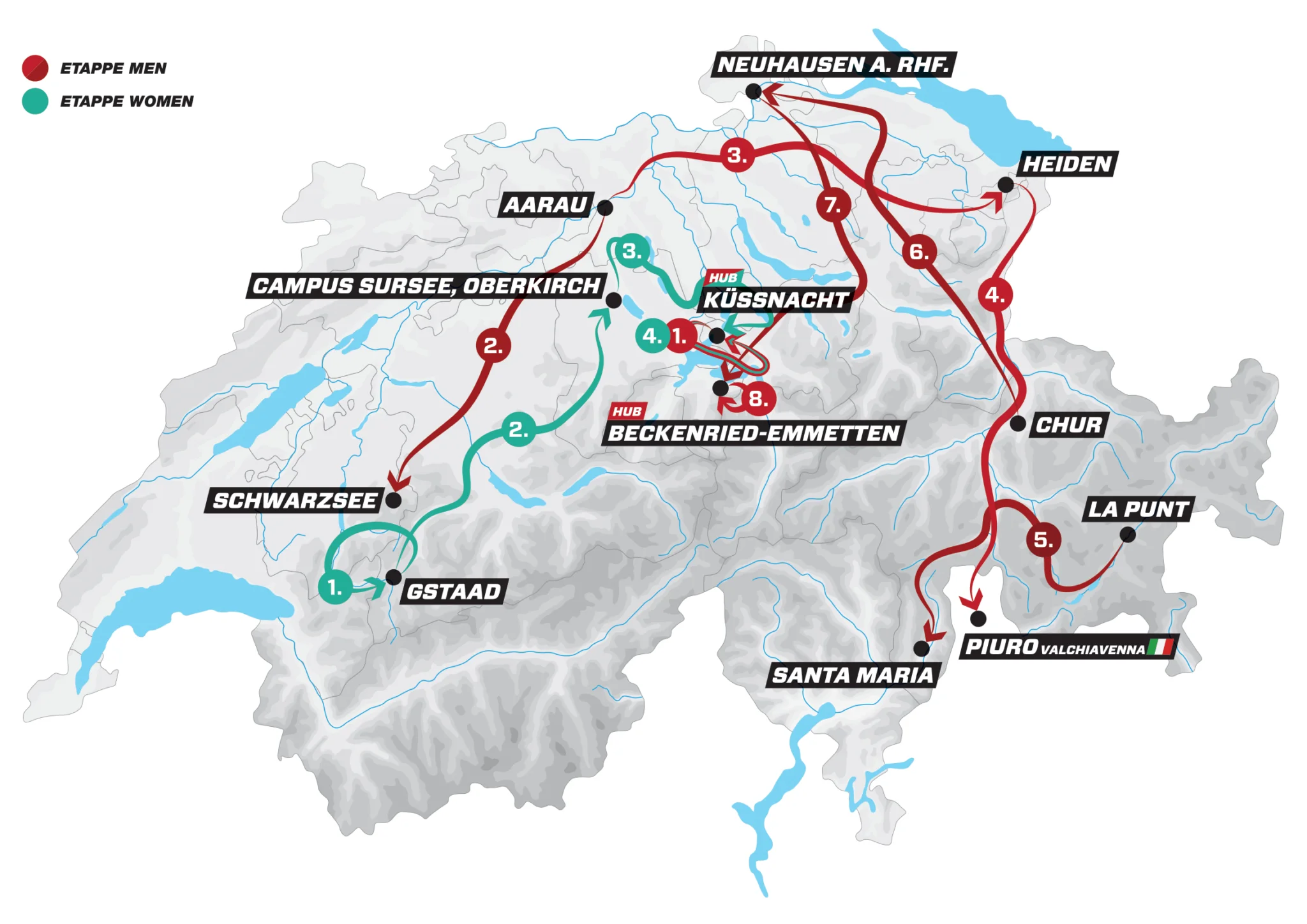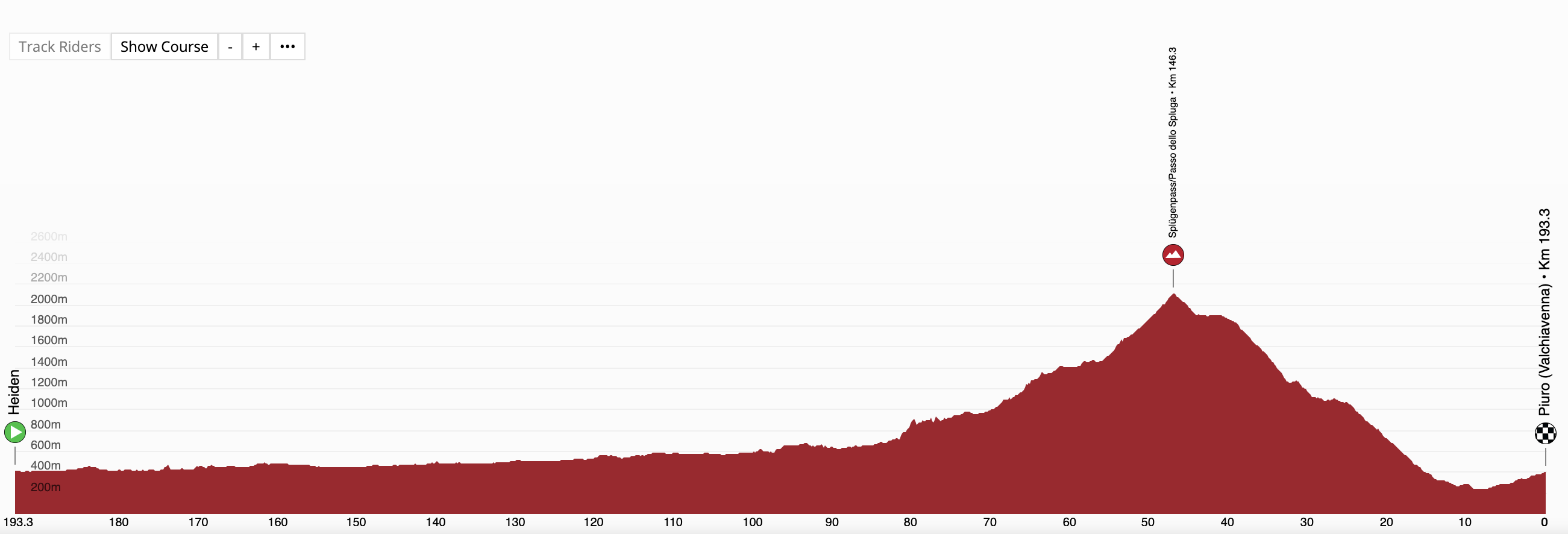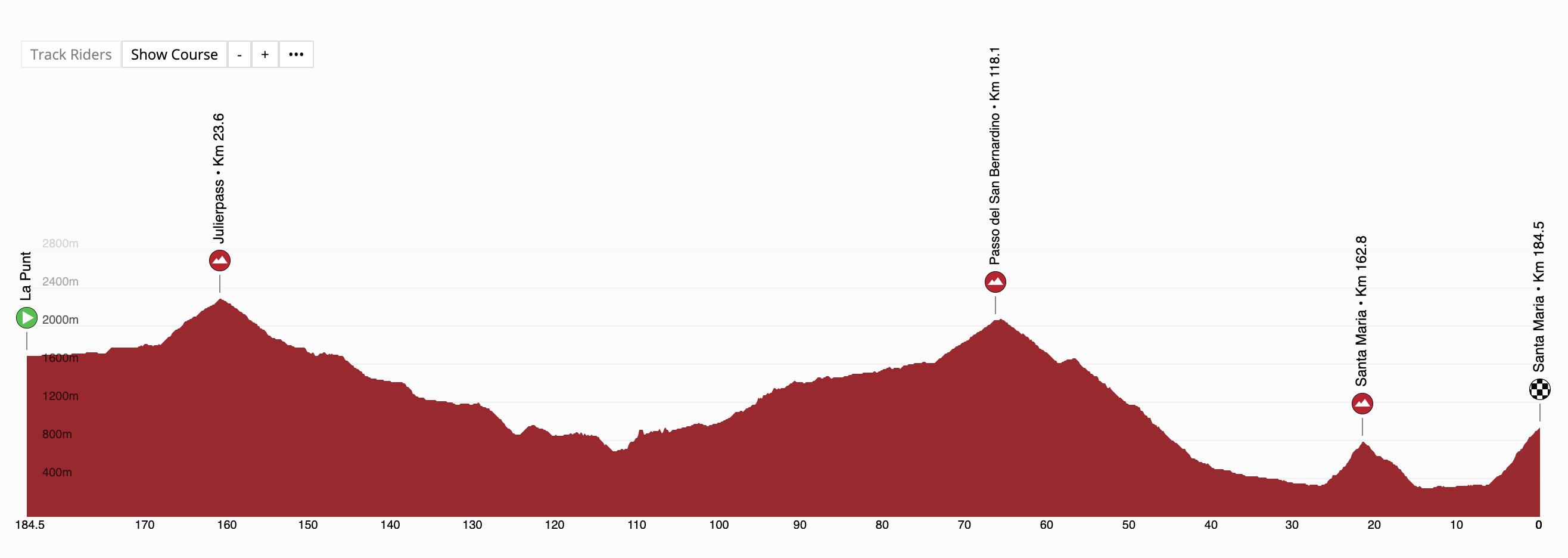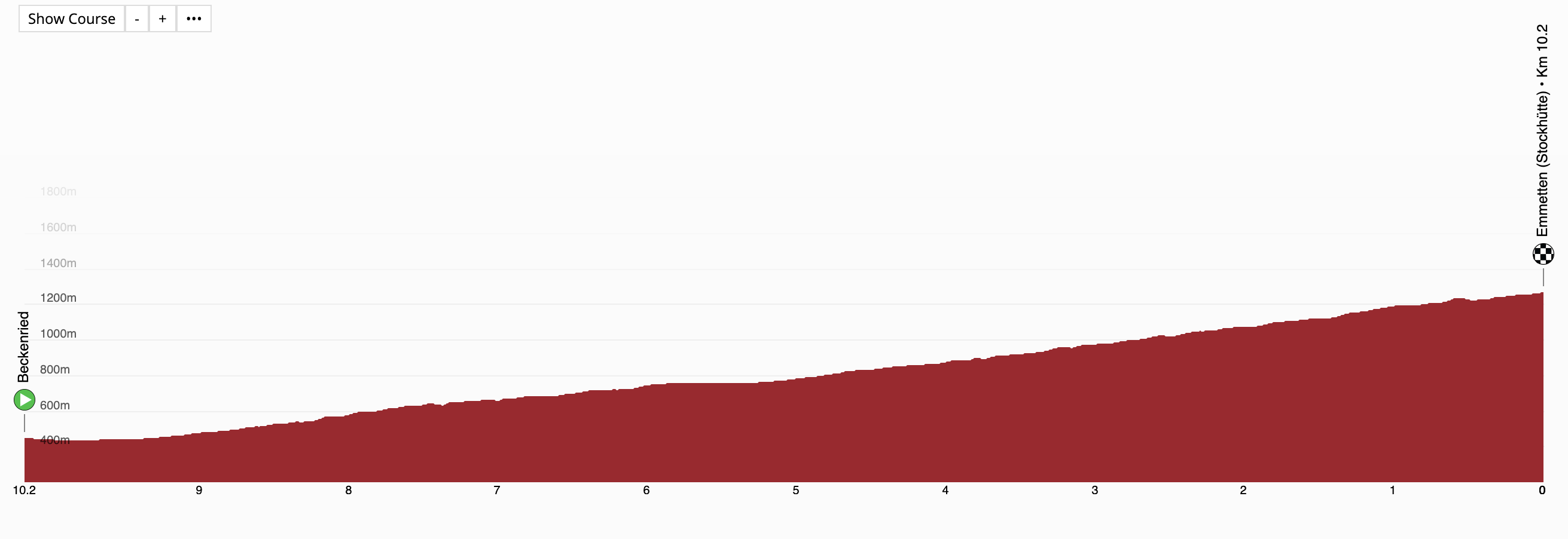
The Tour de Suisse route covers 1281.5km and has 20,000 metres of climbing but this year, there are no high altitude major mountain summits. Instead, the route grinds riders down with a never-ending series of climbs and a mountain time trial to cap off eight days of racing.
There are still massive mountains to get over, however. The Splügenpass on stage 4 takes riders over 2,100 metres and comes with 47km to go but the race descends to 400m of elevation at the finish. Stage 5 features the Julierpass at the start, ascending to 2,288m and the Passo del San Bernardino, topping out at 2,066m with 66.4km remaining but ends atop a climb in Santa Maria at 944m.
The course is by no means easy without the high-altitude finishes. Read on for more details on the 2025 Tour de Suisse route.
Stage 1: Küssnacht-Küssnacht, 127.2km

Rather than start with a prologue, the Tour de Suisse kicks off with a fan-friendly stage around Küssnacht that consists of two loops - one flat, and one with the difficult climb to the Michaelskreuz Chapel. The peloton tackles the climb twice, once with 105km to go in the short stage and a second time with 15km remaining, making for an early selection for the overall classification.
Stage 2: Aarau-Schwarzee, 177.1km

Stage 2 of the 2025 Tour de Suisse could be a select bunch sprint, but the 2,500 metres of climbing culminates in a long drag uphill to the finish in Schwarzsee.
Stage 3: Aarau-Heiden, 191km

Stage 3 is a 'death by a thousand cuts' type of stage, with constant undulations adding up to 3,000 metres of climbing across 191 kilometres of racing but only one classified ascent before the uphill finish in Heiden.
Stage 4: Heiden-Pioru (Valchiavenna), 193.1km

Stage 4 takes riders over the first Alpine pass, with riders climbing to 2,113 metres above sea level to get over the Splügenpass before descending into Italy for a finish in Piuro.
Stage 5: La Punt-Santa Maria, 184.5km

Stage 5 is the queen stage of the 2025 Tour de Suisse, with the peloton heading over the Julierpass at 2,284 metres above sea level - the highest mountain of this year's race. It's followed by the San Bernardino Pass (2,065 metres above sea level) before taking riders up a testing climb to Santa Maria in Calanca, a new finish for the race.
Stage 6: Chur-Neuhausen am Rheinfall, 186.7km

Stage 6 is the only 'sprint stage' of the Tour de Suisse in 2025, but it still involves almost 2,400 metres of climbing. Most of the uphill comes in the first half of the stage with three classified climbs. A gradual ascent to the final kilometre will make for a tough bunch sprint if the race comes back together.
Stage 7: Neuhausen am Rheinfall-Emmetten, 211,8km

Stage 7 is a big stage for the overall contenders, with two tough climbs in the final 30km of the 207.5km stage. Riders have to meter their efforts on the stiff climb to Bürgenstock because the finishing climb comes directly after with a steep ascent to Emmetten.
Stage 8: Beckenried-Stockhütte (ITT) 10.1km

The Tour de Suisse grand finale is a 10.1km mountain time trial that snakes up from Lake Lucerne to the ski station at Stockhütte.







